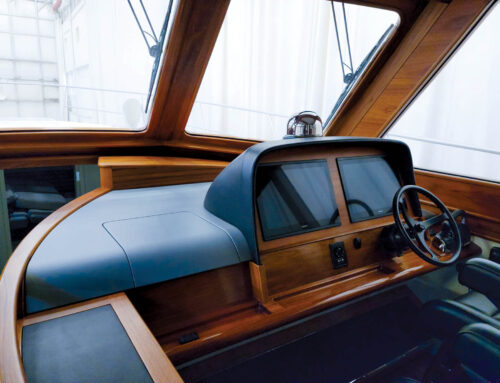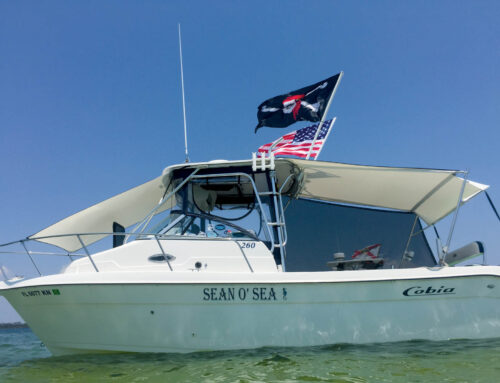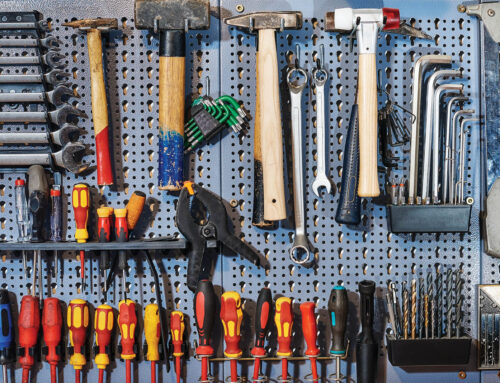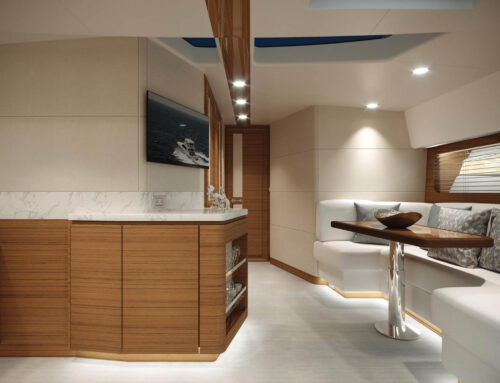Quilt stitching and CNC sewing
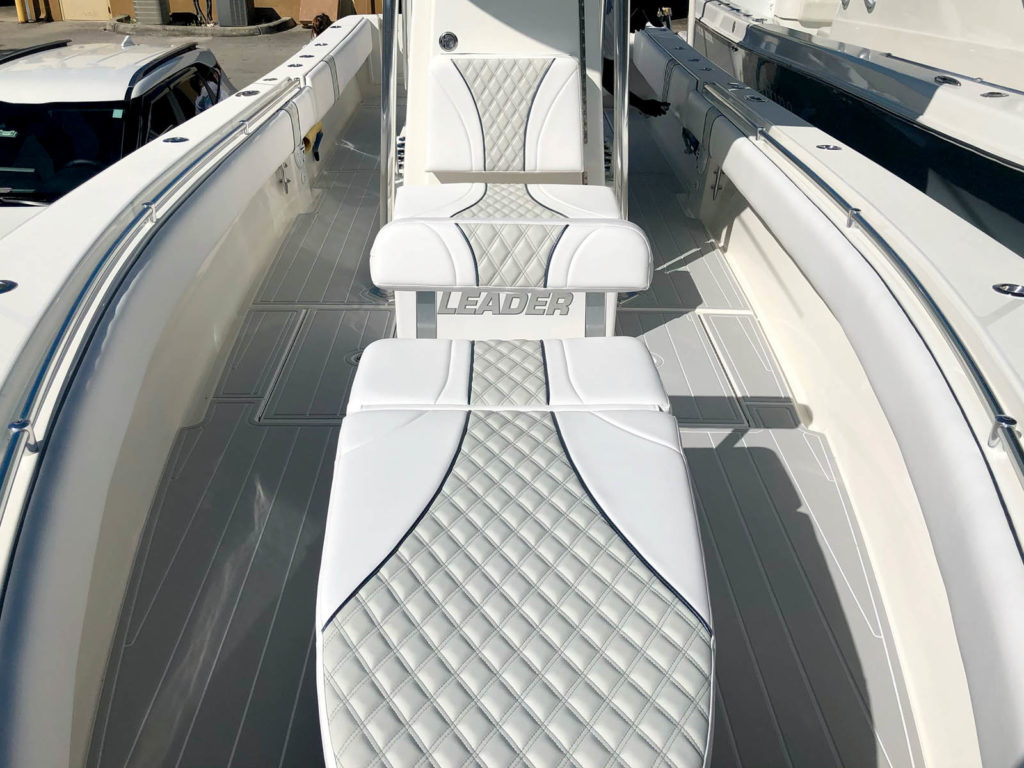
By Mike and John Erickson
In the last few years, quilt stitching on cushions has become very popular in the marine upholstery industry. The trend started with high-end car interiors and has made its way into the marine industry over time. Quilt stitching adds an elegant decorative effect to any routine marine upholstery product. Computerized numerical control (CNC) and manual quilt stitching allow you to create an additional internal profit center while providing enhanced design elements for your customer.
In the early days of this evolution, quilt stitching was a fairly easy process of basic straight-line channel stitching a layer of fabric to a foam layer and some type of backing layer. This process was easy and could be completed on the same sewing equipment that we use to sew the cushions themselves. The only talent required was being able to sew a straight line. The only real variable back then was the width of the channel.
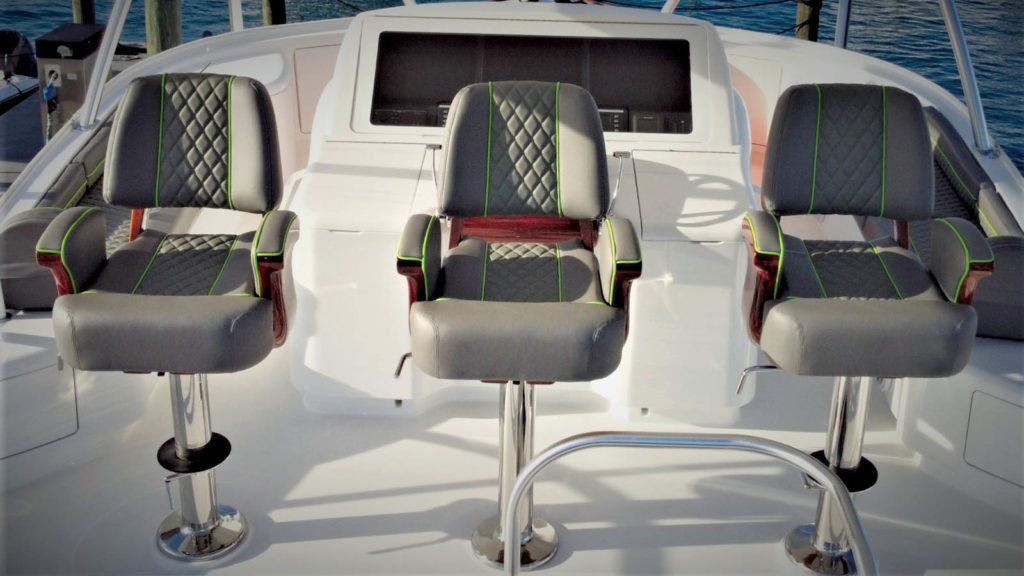
Increasing options and expectations
Today’s quilt stitching is much more sophisticated than the manual channel quilting days. There are an unlimited array of patterns and variable thicknesses of foam, along with different sizes and colors of thread that can play into the final design that you may be looking to achieve. The pattern element in your design is only limited by your imagination, sewing talent and equipment.
Obviously, any pattern that can be drawn or imagined can be sewn with the right automated CNC sewing equipment. With a little forethought and talent, many of these patterns can also be sewn on an ordinary walking foot sewing machine. CNC sewing equipment has become less expensive and opens the door to many other designs that just cannot be achieved with standard sewing equipment. It’s either not a cost-effective use of your time to manually sew, or the patterns are so complex they are not conducive to these sewing limitations.
With today’s modern equipment, the next evolution is embedding embroidery with stitch patterns. You are starting to see this evolve on the automotive side, and we believe you will start to see this element come into the marine market as well.
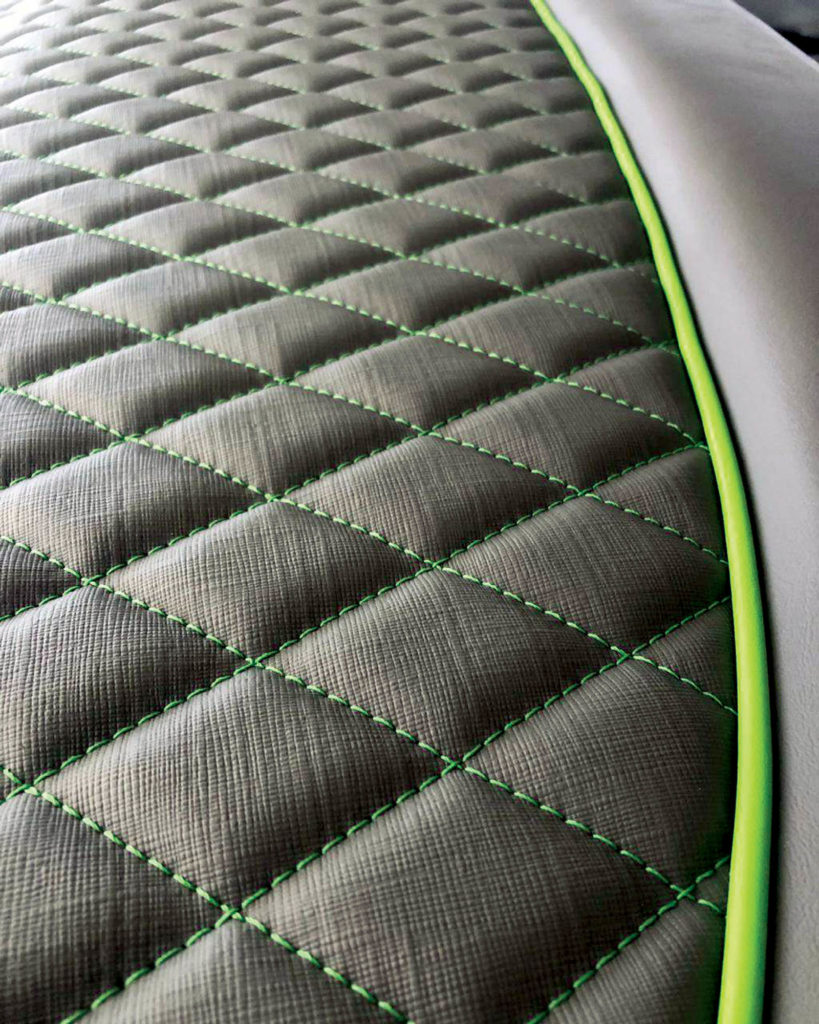
Foam considerations
The thickness of the foam used as backing is an element that can play a large part in a finished quilt design. Varying foam thickness is what will give depth to your finished product. At Canvas Designers Inc., we use everything from ¼-inch up to ¾-inch foam thicknesses. Most automotive products use ¼-inch but the increased thickness of the foam can change the whole look of a design’s depth. We personally use ½-inch as our standard thickness and go down to 3/8-inch or ¼-inch only when we have a very small pattern and are looking to have a flatter look. All four foams we use have a tricot backing already applied to them.
If you are going to attempt to do your own quilt stitching, make sure you use a backing layer or the quilting will look flat from the front side because the stitching will just collapse the foam and not pull in the face material. There are even variables such as removing or collapsing foams in patterns to create even more 3D elements to the product. So, open your minds and feed your creativity by playing with foam depths and foam variables in your designs.
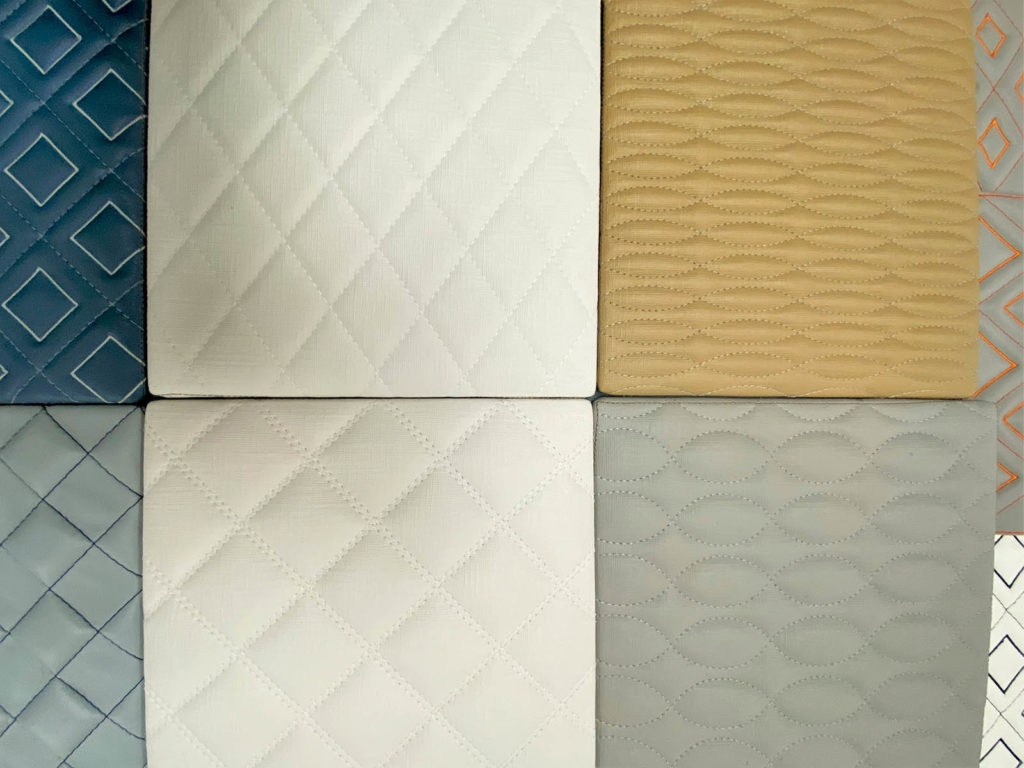
Thread creativity
An important element to your quilt design can be the thread portion of the job. With this type of quilt stitching, the thread is exposed at the surface of the panel. The size and color of the thread can contribute to the final look of your finished product. Using complementary or contrasting thread to the color of the fabric allows you to achieve different design effects in your finished products.
As we have seen in the automotive industry, thread size can even play a part in the finished look. Everyone has seen sports cars with seats topstitched in bright fluorescent-colored large-diameter threads. Your equipment limitations may or may not let you vary the thread size, but remember that automotive trends typically show up in the marine industry, so be prepared for this element when considering future equipment needs.
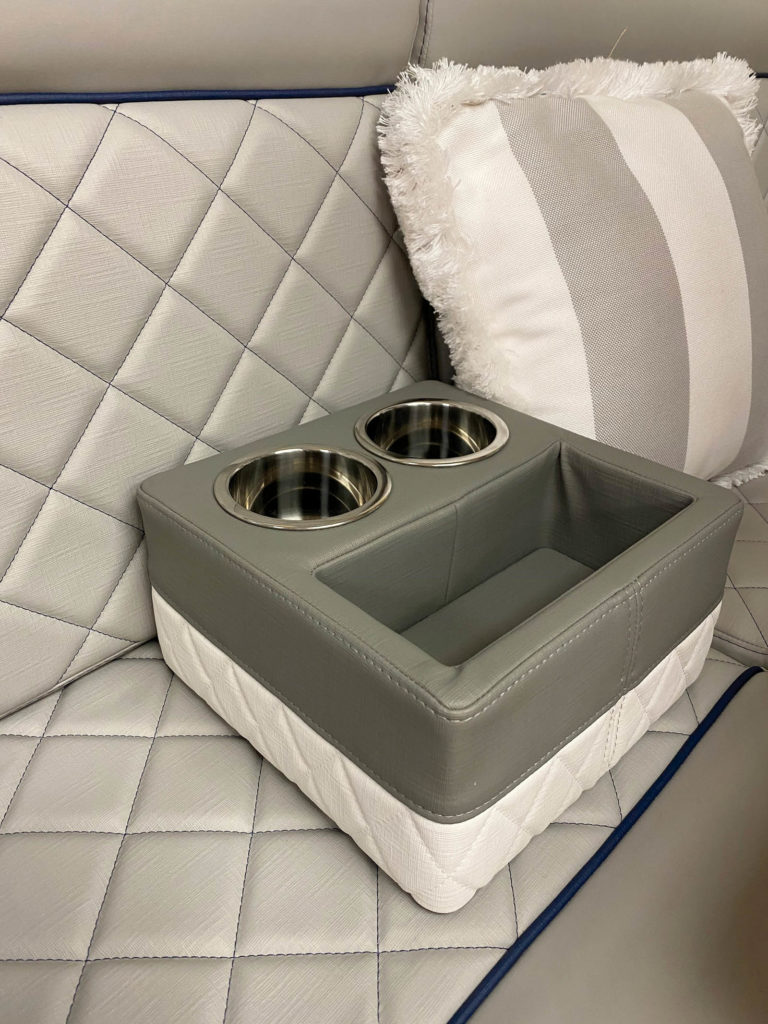
Equipment and talent upgrades
Canvas Designers has invested in equipment over time to align with the demands of the market when it comes to quilt stitching. We quickly realized that the throat limitation on our sewing machine made it very difficult to do any larger-sized patterns, so we invested in a 30-inch long-arm sewing machine to get more face fabric under the throat of the machine. This helped tremendously for hand quilting and is still used extensively by our sewing staff for some of the basic channel and diamond requirements that are stitched.
However, this method is limited and cannot be used in many of the intricate patterns we sew today. The more intricate patterns take extensive sewing talents and a lot of time to complete the tasks using standard machines. Since we were already making custom comforters and bedspreads in our shop, we had a Gammill Statler® stitcher in our facility. Our Gammill was both a manual hand-guided machine and a computer-driven CNC machine. While it is typically used with lightweight thread to quilt bedding, we were able to get it to sew the larger threads required for quilt stitching and to do a decent job on the basic diamond patterns without a lot of effort.
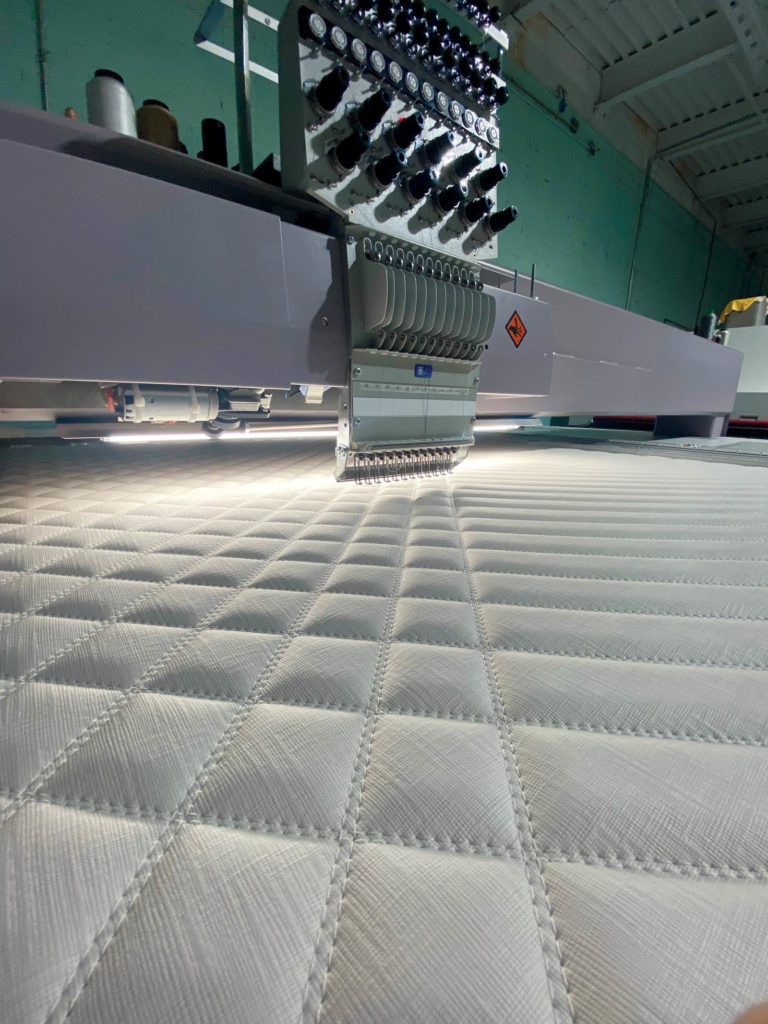
Anticipating market demand
As demand for more intricate patterns and designs continued, we upgraded to our ZSK CNC embroidery machine. This is one of the few equipment options on the market that allows us to use both a heavy thread for the quilt stitching and a small thread for the embedded embroidery capability we were looking to add. Our machine is a 12-thread machine with six large threads and six embroidery threads that can be used simultaneously to create a design. This machine allows us to quilt stitch any pattern drawn or imagined, but unlike most other equipment, it also allows us to embed embroidery in our quilted pattern at the same time.
The embroidery machines in this market segment have a fixed head and a large hoop that moves the fabric in the pattern we are trying to achieve. Our machine has the largest sewing area of its type available in the U.S. We can continuously sew a panel area of 52 by 54 inches with our ZSK and embed embroidery anywhere within this same area. This capability gives us an infinite number of design elements that now allow us to build unique and high-end upholstery products that many of our competitors are not capable of producing. It has also opened an opportunity to produce these panels for other shops and has allowed us to expand our workload to keep the machine busy doing our retail work as well as wholesale work.
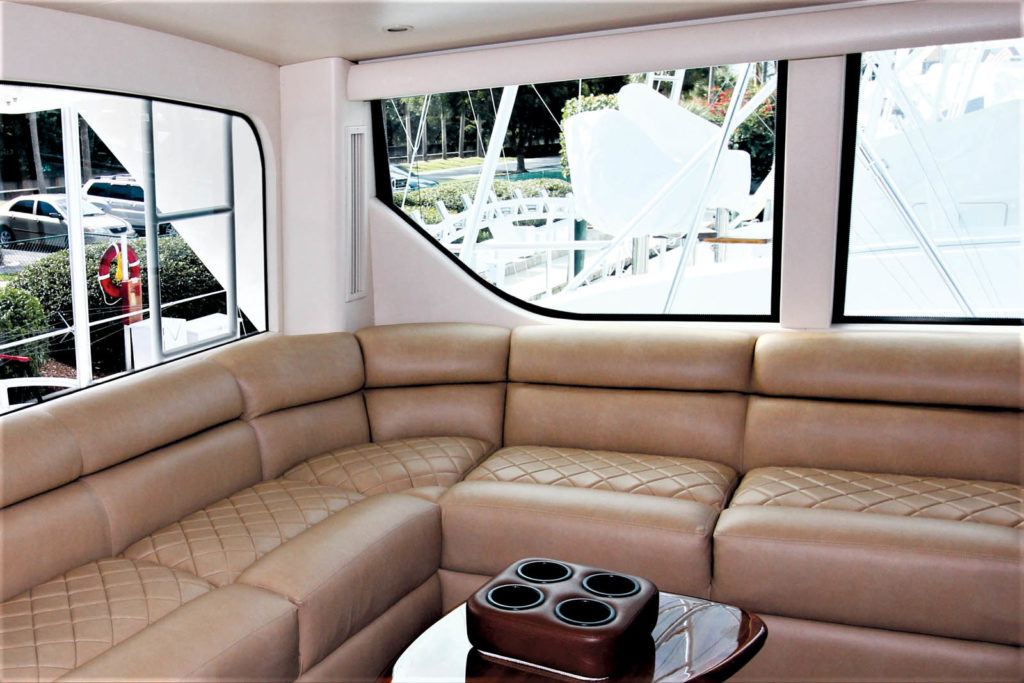
Upholstery designs change just like the fashion industry, but quilt stitching is the newest trend and one that will be here for a while, so jump on board and add some creativity to your next project. Whether you’re hand-guiding, outsourcing or looking for your next equipment investment, this is an element of design that allows you to add tremendous value to your finished products.
Mike Erickson is CEO of Canvas Designers Inc., a large South Florida custom canvas and upholstery shop. John Erickson is the next generation in the family and head of the technology department. He oversees all CNC, CAD, cutting and equipment development for the company.
 TEXTILES.ORG
TEXTILES.ORG 


